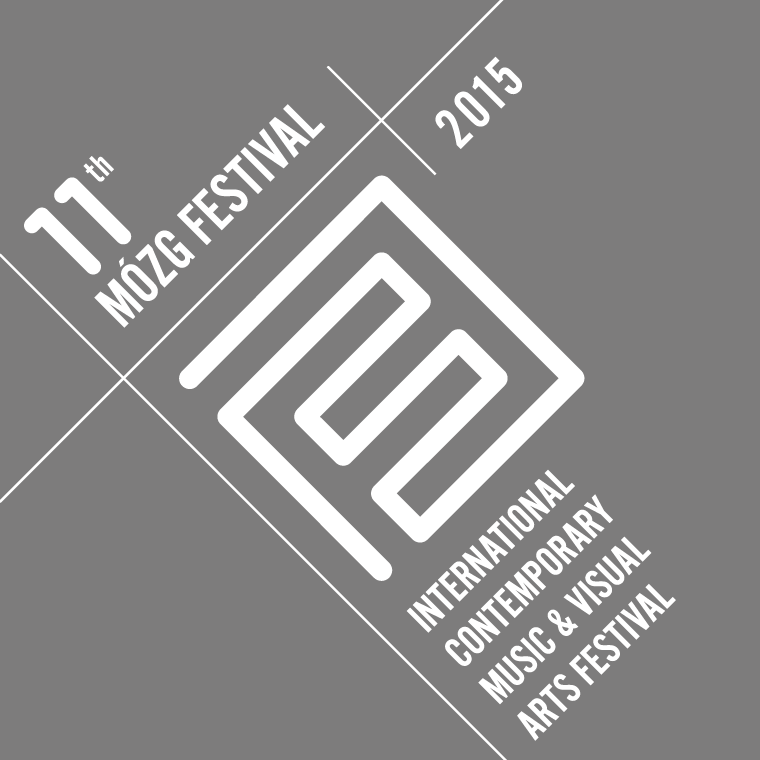
The Body and the Space
In this series of workshops, we will explore not only the meaning of the “Body” in Butoh, but also the importance of “Ma” or the empty space. Participants will gain understanding of these concepts by moving their bodies and exploring the space around them.
Teaching Sections:
• Basic body training
• The relationship between (the) body and space
• Exploring where/how movement originates in the body
Preparation:
• Water
• Comfortable flexible cloth and pant for body movements.
• Towel
Cost: 70 zł / 60 zł
notification: amareya.theatre@gmail.com
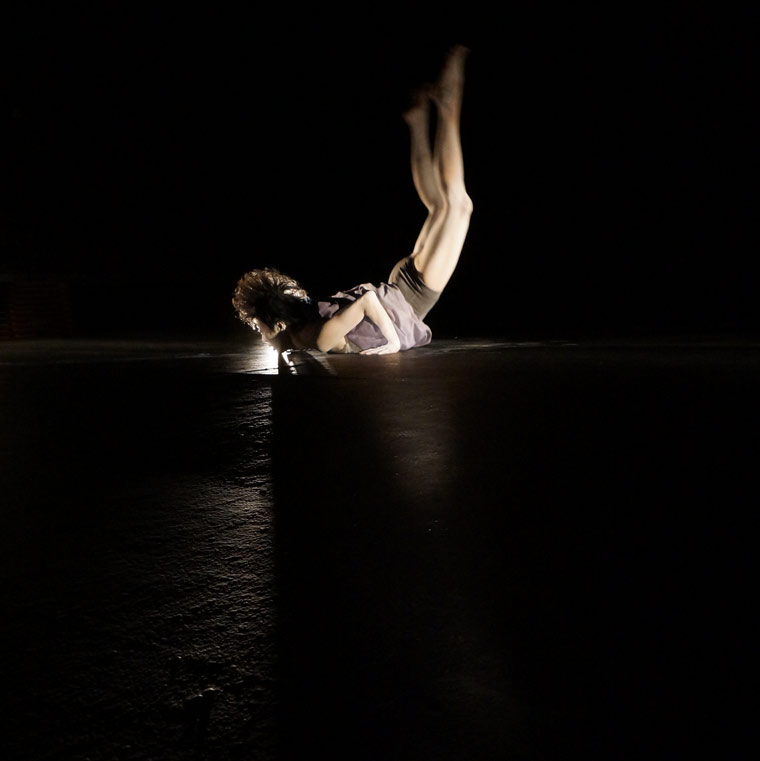
Forest Where Stardust Pikaru (50 min)
Countless Lives became stars due to the great earthquake.
It is picking it up while saying that children are just part of the collection and the owners of whom the hands and feet were disjointed because of the tsunami will never understand.
The stardust is gleaned.
It is picking them up in tiles and pebbles now, for a lot of stardust that did not cut are covered with mud, and their light has only been shot so slightly.
Mother in the earth please be silent.
Tickets: 20 zł / 15 zł
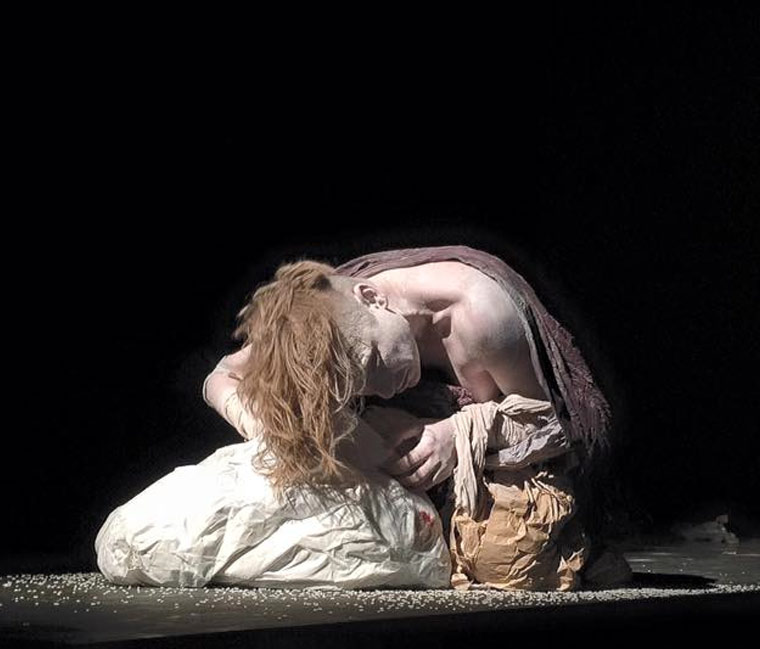
Concept and performance: Katarzyna Pastuszak
Music: Joanna Duda
Costume: Daisuke Tsukuda (The Rebelis)
„Yameru maihime_prolog” is the first part of a triptych inspired by the character of Hijikato Tatsumi, who is the father of the Japanese dance genre butō. The title of the project refers to his quasi-autobiographical book entitled “Yameru maihime” (Dancing sick princess). This performance opens a cycle, on which Pastuszak reaches to her childhood, and on the other hand starts a dialogue with the concepts of the Japanese artist. The “Yameru maihime” project by Katarzyna Pastuszak coincides with the publication of her book “Ankoku buto Hijikaty Tatsumiego – teatr ciała-w-kryzysie” (Ankoku buto of Hijikata Tatsumi – the theatre of body-in-crisis), which represens another step in Pastuszak’s exploration in the field of butō. The dialogue between Pastuszak and Hijikata is deepened thanks to the cooperation with costume designer Daisuke Tsukuda, who prepared an original Japanese kimono dyed in dry mud from Tōhoku – the region, where Hijikata was born.
Katarzyna Pastuszak, PhD (Gdańsk), born in 1980, is a dancer, director, theatrologist, translator, curator of Gdański Festiwal Tańca in the years 2009-2014. Since 2003 she has been co-creating Teatr Amareya. She also directs theatre projects with disabled and blind people. In December 2014 her book „Ankoku butô Hijikaty Tatsumiego – teatr ciała-w-kryzysie” (Ankoku buto of Hijikata Tatsumi – the theatre of body-in-crisis) was published by Universitas. Teatr Amareya lead by Pastuszak was recommended in 2014 by the jury of Polska Platforma Tańca to present their works as a part of “Wizutówka artysty”.
Joanna Duda (Gdańsk), born in 1983, is a pianist, composer. She finished the music school in Gdańsk and is a graduate of the Music Academy in Gdańsk. She has also studied at Policealne Studium Jazzu im. H. Majewskiego w Warszawie (2009). Joanna Duda started cooperating regularly with Teatr Amareya by making music to plays “2” and “Fetish.WTF”, “Nomadka” and to the performance “FRAGILE”.
Nobody knows how old he is. Some believe he's two, others think that he has lived forever and started living again. It is said that he droves a yellow Nissan 350ZX 95', which is also a transformer. For the past 40 years he has visited Hawaii more times than Bydgoszcz's own Myślęcinek, he hithiked with Johnny Depp, visited the mountains of Tibet and met with Dalai Lama. During 20 years working on the position of Leszek in Bydgoszcz's Mózg, he sold countless drinks, seeded hundreds of plants, put hundreds of books at the bar, thrown several dozen birthday parties, produced litres of punch, outtalked more than one guy bigger than himself, made friends with innumerable generations and discovered undetermined amount of music. His ambitous music selection wouldn't embarass even even the most blasé journalist writing for scandinavian blogs, which we don't even know because we're not hip enough. On the other hand, his kitschy selection is so kitschy that the exact same journalists wouldn't be embarassed with it either. Starting with electro-hindu-funk, through deep experimental, deep acoustic techno, to electronic synth wave and disco tzigane, DJ Leszek doesn't see the end of music synthesis. He is and has always been the master of sound selection, even for the most difficult listeners to pelase.
Ann Noël (Berlin), born in Plymouth, England in 1944, has lived and worked in Berlin since 1980. Her wide-ranging talents as painter, graphic designer, printmaker, photographer and performance artist bear witness to a rare combination of creative ingenuity, bold experimentation, and up-to-date technical skills. Since the early eighties she became an active part of the Fluxus movement participating in all kinds of events and performing alone or in a group, especially in collaboration with her husband Emmett Williams.
Eric Andersen (Copenhagen) was born in Antwerp in 1940 is an artist associated with the Fluxus art movement and interested in intermedia art. Currently, he lives in Copenhagen, Denmark. Andersen’s performances depend very much on the audience and this way he explores the open interaction between performer and public, developing open self-transforming works, such as arte strumentale - works that altered themselves. This is true of not only his Fluxus actions but also his installations, to which the public may be prompted to contribute. In 1996, the year in which Copenhagen was Europe’s cultural capital, Andersen arranged a three-day inter-media event involving parachute-jumping, helicopters, mountaineering, live sheep and 500 singers walking on water.
Benjamin Patterson (Wiesbaden) was born in Pittsburgh in 1943. He studied the double bass, Composition, and Film Direction at the University of Michigan. As an African American musician, it was impossible for him to get a job at a symphony orchestra in the United States, so he started out playing with Canadian orchestras. In 1960 he moved to Cologne, Germany where he became active on the contemporary music scene of the most radical, focusing its activities at the studio of Mary Bauermeister. In 1962 he participated in the first Fluxus Festival in Wiesbaden and then in several more editions. Patterson cites the artists Robert Watts, George Brecht and Dick Higgens as his greatest influences.
„I’M NOT CRYING – I’M LAUGHING”
Eric Andersen said it when I was recording a musical collage consisting of different people laughing. I asked Fluxus artists to submit their voices and laughter. Eric started with this strange voice resembling crying more than laughing and when I asked him “why are you crying?”, he said: „I’M NOT CRYING – I’M LAUGHING”.
Since the very beginning, Fluxus has always perceived laughter and fun as one of the main creative elements. Today, being the curator of the Fluxus show during the 11th Mózg Festival, I thought it was the perfect title.
Both world wars contributed to the fact that the greatest achievement of Renaissance, the idea of humanism, was at the verge of annihilation. The need for radical change appeared. Since the times of Sigmund Freud the perception of a human began to change. A human turned out to be something more than just an outer shell subjected to the laws of nature and culture. A human is someone who exceeds our foregoing idea of ourselves far beyond. A human turned out to be a twine of extraordinary and amazing feelings and emotions, real and absurd, wilful and intuitive. It has been the greatest change in the perception of humans and their place in the world since the Renaissance era. Fluxus’ activity is an attempt to look at the world and your own self from a new perspective, using absurd, intuition and laughter in search of freedom and reflection upon the world. The name “Fluxus” indicates the undetermined fluidity and dynamic of the world. When the world snapped out of the catastrophes of both world wars, not only the ruins of houses and cities were left. The foregoing perception of the world, as a structure consisting of undisputed laws and rules, was fell apart.
One of the most popular Fluxus actions was the destruction of a beautiful grand piano. An act as sacrilegious, as it was absurd. It took place in Wiesbaden in 1962 during the first International Fluxus Festival Fluxus International Festspiele. This performance was a reflection of the brutality of the real world. Grown men were playing like little boys, devastating a symbol of high culture and beauty. It turned out that the high culture could not protect the humans from almost utter annihilation. It is a bitter statement: „I’M NOT CRYING – I’M LAUGHING”.
Grzegorz Pleszynski
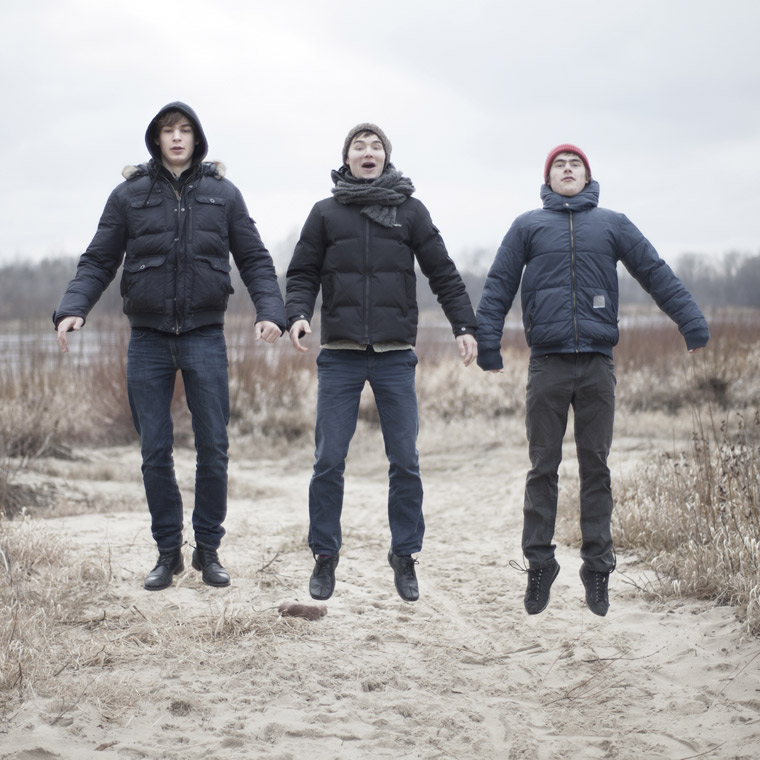
The Love And Beauty Seekers (Warsaw) is a Polish trio from Copenhagen. The musicians explore the opportunities that a combination of saxophone, double-bass and drums gives. They broaden the limits of imagination while being on a quest for love and beauty. The band plays open compositions that leave a lot of space for improvisation and unpredictability. Through their music they express freedom and energy.
Jędrzej Łagodziński - tenor saxophone
Franciszek Pospieszalski - double-bass
Szymon Gąsiorek - drums

The beginning of this ensemble reaches mid 90’s, when the band Miłość has been recording and playing with Lester Bowie – the leader of the Art Ensemble of Chicago. We, Mazzoll & Arhythmic Perfection, have just released our first 2 albums “a” and “out, out to lunch”.
We had met the crew of the Art Ensemble of Chicago. Not long afterwards, we wrote letters to Lester Bowie, Joseph Jarman and Roscoe Mitchell and sent them via regular post. The letters, apart from copies of “out, out to lunch”, contained an offer to play and record together. Today, it seems quite amusing, however, back then, when genuine emotions were more important than anything else, for us it was the only way to do this.
All three of them wrote back that they wanted to work with us. Unfortunately, none of us knew how to get this going. They were in Chicago, we were in Bydgoszcz or Gdańsk… In 1997 Arhythmic Perfection, together with Kazik Staszewski, recorded “rozmowy scatem” and then, somehow, the band stopped playing.
Time passed by and in 2002 I went to Joseph Jarman’s concert in Poznań. During the interlude I went backstage, introduced myself and was surprised to hear: “Yeah, I remember, I have your album. Why haven’t we played together yet?”.
Still, some time had to pass. Joseph is not at his best, however, we finally managed to work out the logistics with Roscoe. We will play two concerts together which will truly be an extraordinary moment in my life.
If someone were to ask: “why”? What does the music of some black guys from Chicago have to do with us? What for? What does it represent? Probably, a few more similar questions could be asked. Maybe I would have asked them myself if it were about a different ensemble.
My answer is this, I do not identify my music with any music genres, and at the same time I relate to many. Roscoe was one of the guys, who, a long time ago, inspired me to take up a certain path, not only in music but also in life. By saying that I mean certain flashes that change your state of mind forever. To me, he is one of those men (for me, there were maybe five of them) who made everything sound and look different later, just by arranging a few sounds in a specific way.
I am not sure what exactly is his merit in all that. It does not matter. Every person lives their lives and walks their path. Some paths cross and it seems that we will be walking alongside for a brief moment. At least twice, we will sit together, talk about what we hear in our own different and yet somehow similar worlds. These sessions appear interesting due to the participation of Mazzoll, with whom I played everything that has the most value to me, and Qba (my son), who came from us, has a lot to say and keeps pulling us towards the unknown.
S. J.
Roscoe Mitchell (New York), born in Chicago in 1940, is an internationally renowned musician, composer, and innovator. A leader in the field of avant-garde jazz and contemporary music, he is a founding member of the world renowned Art Ensemble of Chicago, the Association for the Advancement of Creative Musicians, and the Trio Space. Mitchell played saxophone and clarinet as a teenager. While stationed in Germany as a member of the Army, Mitchell played in a band with tenor saxophone innovator Albert Ayler. Upon returning to the U.S. he began his distinguished career in the spirited 60’s. Mitchell played bop with a group of Wilson Junior College students and began listening to the recordings of Ornette Coleman and John Coltrane. At his most lyrical, Mitchell's saxophone lines exploit the instrument's strength as an interval-making machine. At his most energetic, Mitchell takes advantage of the saxophone's timbral flexibility and the horn's natural tendencies, which allow a player to play fast, scalar lines. Whether playing soft or loud, slow or fast, Mitchell's playing is invariably suffused with passion and intensity. Mitchell's improvisations exercise extraordinary discipline and intellectual rigor. He's at once a patient and impulsive improviser, prone to alternating episodes of order and chaos, clarity and complexity. Mitchell is a technically superb, if idiosyncratic, saxophonist. His composition works range from classical to contemporary, from wild and forceful free jazz to ornate chamber music. His instrumental expertise includes the saxophone family, from the sopranino to the bass saxophone; the recorder family, from sopranino to great bass recorder; flute, piccolo, clarinet, and the transverse flute. Also, for over 35 years, he has designed an elaborate percussion instrument called the Percussion Cage, consisting of instruments from America, China, Tibet, Africa, Australia, Switzerland, France, Germany, Italy, and Turkey, as well many found instruments.

Norbert R. Stammberger (Munich), born in 1958 in Coburg, currently lives and works in Munich. He is a saxophonist, solo artist, improviser and freelance composer. He has performed in Europe and worldwide. He played with Belgrad Radio Symphony Orchestra, Rundfunkorchester München, Ensemble Mambo Varèse, Torino Blackout, Tribal Error. He worked with Allen Ginsberg, Mal Waldron, Fred Frith, Ernst Fuchs, Hans Werner Henze, Peter Brötzmann, Chris Karrer, Amon Düül II, Popol Vuh and Embryo. He holds Master of Arts in Philosophy and is the founder of the GNU Records & Publishing Munich.
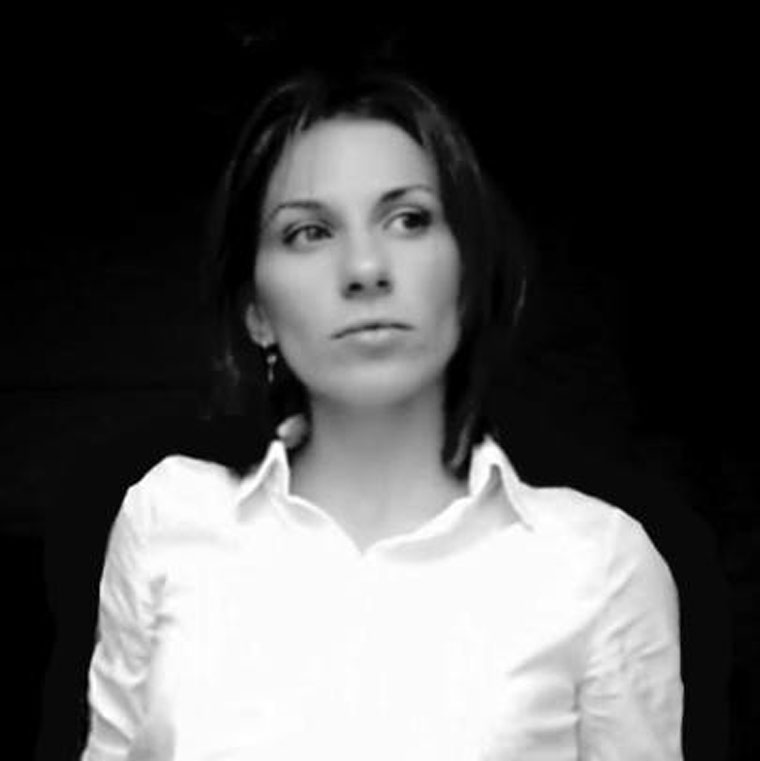
Ula Bugaeva (Warsaw) is a self-educated artist from Ukraine. She works with new media and sound visualization, she also experiments with traditional materials such as ink, gouache, coal, acrylic paint. Her main point of interest is the intersection of traditional and modern forms. Her main goal is searching for new shapes – strong and expressive, always abstract, free for interpretation. One of the most important sources of inspiration for her is music, sound and rhythm, which are internal motives of her works and are reflected in the form of lines, colors, composition and technique.
This exhibition “Brodmann area 22” concerns the idea of conversion of the language of sound to the language of image.

Artur Maćkowiak (Bydgoszcz) is a musician and a performer. He plays solo and in Innercity Ensemble, as well as in various ephemeral musical projects. He used to be a member of Something Like Elvis and Potty Umbrella. He creates music in the wide field of guitar music seasoned with a big dose of experiment, electronics, ambient and improvisation, however, with quite characteristic Slavic melodic.
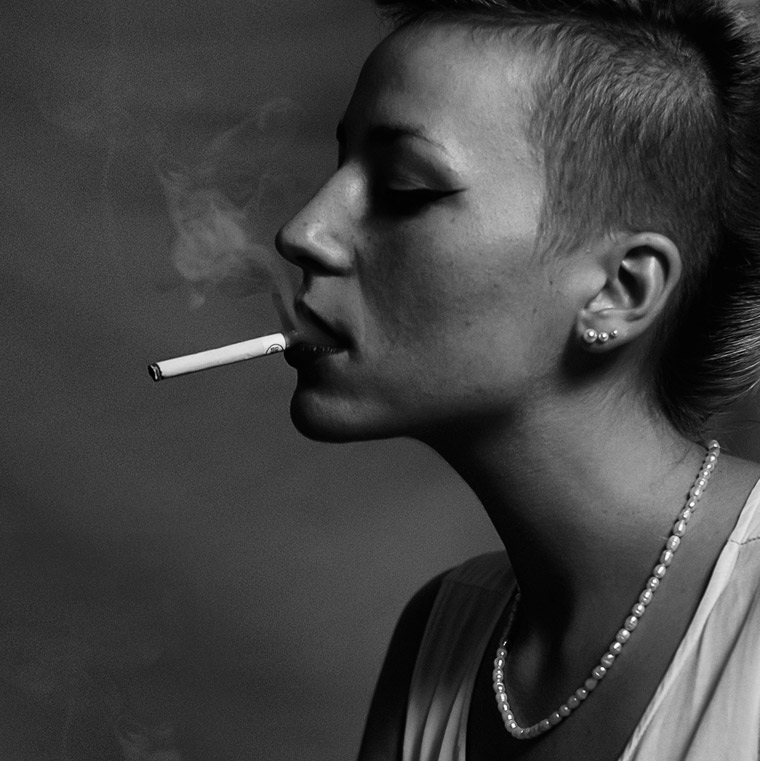
Hania Piosik (Warsaw) is one of the most recognisable female singers from the Warsaw new wave. Her characteristic timbre, imagination and talent turn every concert into a metaphysical phenomenon. Working with various musicians she presents her own, often very personal, means of expression in extremely different styles. Currently, in addition to singing with Warsaw Improvisers Orchestra, she is working on a debut album of Rumianek project. She is also cooperating with Qba Janicki, a multi-instrumentalist from Bydgoszcz and two musicians from Warsaw – Patryk Zakrocki and Paweł Szamburski. Her own solo project will be released in 2016 in Japan.
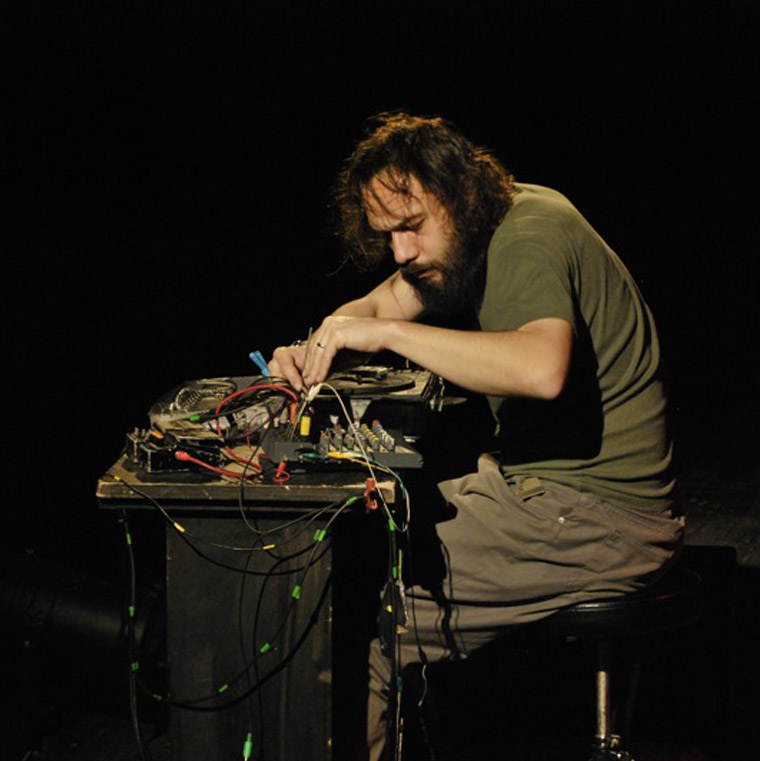
Arnaud Rivière (Paris) practices free improvisation. He uses a rudimentary electroacoustic device built around a repaired turntable, a prepared-mixer and other equipment. Arnaud’s performance is always far from subtle. He attacks with raw sounds of objects rotating on the turntable and dangerous wires stuck directly into his mixer. He is an unabashed feedbackophile. The harsh beauty of Riviere’s music comes from deftly controlled bursts of energy and a wonderful sense of structure. Rivière also conceived the sound installation LA TURBOTHEQUE, an absurd kind of juke-box that basically reads music vertically instead of horizontally; all tracks of one CD are played at the same time and a whole album is length-compressed to the size of the longest track it contains.

Jacek Sienkiewicz (Warsaw) is a shadowy figure. Despite 15 years of running his own label and releasing much-praised records through numerous prolific European labels, he somehow manages to walk his own path towards a very peculiar vision of contemporary electronic music. With one foot deep in classic Detroit and Chicago dance scene, and the other in modern jazz and classical music, Jacek's tracks for the past ten years always try to find a right balance between the avant-garde and dancefloor, between primal emotions and highly sophisticated sonic wizardry.
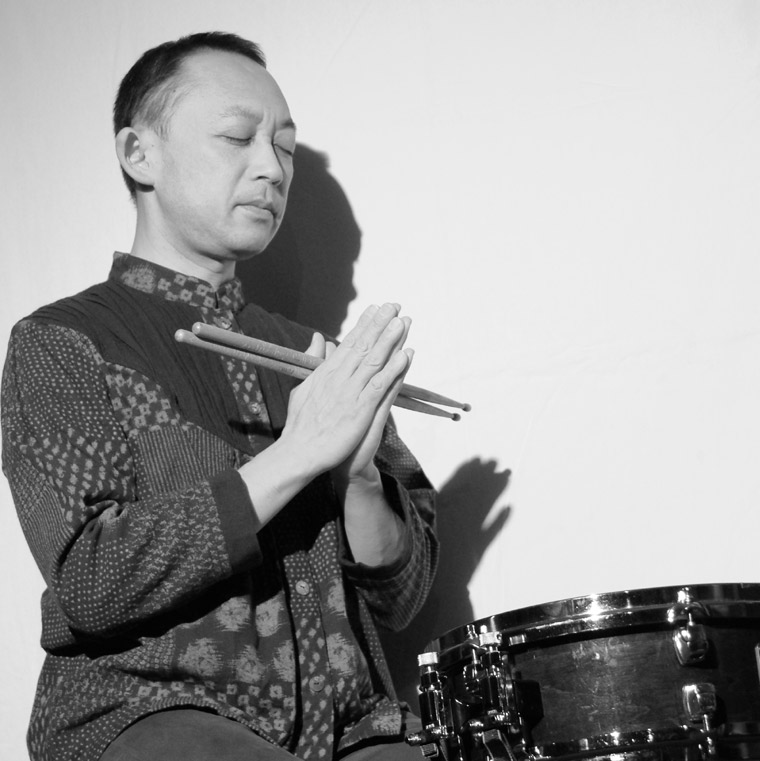
Morihide Sawada (Tokyo) studied electrical engineering and started to play his own music in 1980. His first job was an editor of a music magazine that specializes in progressive rock. After that, he was working as a sound engineer, and he sometimes played drums with different bands. In 2006, Sawada played drums as a member of a psychedelic rock band. Since that time, he sometimes plays in Europe. He started touring with a solo performance "snare drum solo" since September 2011. Its music has received strong influence mostly from traditional folk music and minimalism.
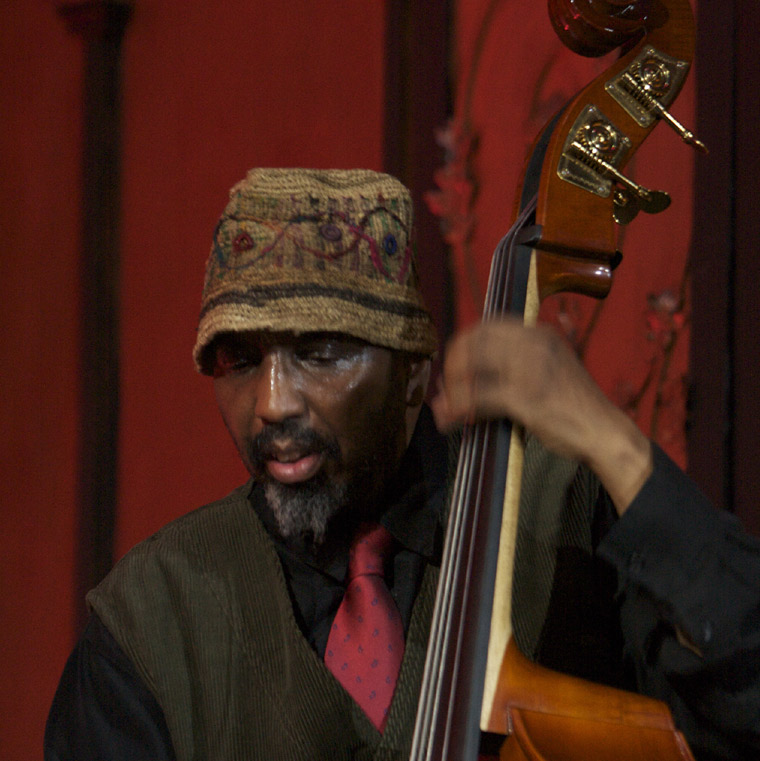
William Parker (New York) is an American free jazz double bassist, multi-instrumentalist, poet and composer, who was born and raised in the Bronx. Currently living in the Lower East Side since 1975, Parker has been a key figure in the New York creative jazz scene. Parker is also an educator and an author. He is a prolific recording artist, with over 150 recorded albums and countless celebrated stage appearances. In the 70’s and 80’s he was a key figure in organizing artist run festivals and music series, such as The Sound Unity Festival and Stork Records. These efforts served as an inspiration and guide for the Vision Festival. Musica Jazz in Italy, named him musician of the year in 2007 and in 2014 received the Doris Duke Performing Artist Award.
Drummer, composer, storyteller Sean Noonan (New York) describes himself as one who collects tales, legends and life stories and transforms them into the raw material that forms the entirety of the music he creates. Noonan first appeared as the drummer of The HUB from the Brooklyn underground scene. He is a Berklee College graduate. After recovering from a near-fatal car wreck in 2003, Noonan decided his next project would combine his two musical loves of jazz and African rhythms. Combine the two with some Irish lyrics and attitude and you have the basis for Brewed By Noon. Since the birth of this band, Noonan has created original musical concepts from Afro-Celtic Punk-Jazz to composing downtown avant-garde chamber music and improvising stories from his drum set.
Steven DeBruyn (New York) is best known as the frontman of the experimental blues band El Fish. More recently, Steven founded a new unique collective called The Rhythm Junks, the hybrid of the master orchestras. It is a roots group that exchanged its guitarist for a wind section, a beatnik big band with its harmonica player as a conductor. The engine runs on bass, drums and a mouth organ.
Jasper Hautekiet (New York) studied electric and double bass at the jazz department of the Royal Conservatory in Antwerp. Always having been into many different styles, Jasper was involved in numerous bands and projects. For the past decade his focus has mainly been on The Rhythm Junks, a trio on the verge of roots, jazz, pop and soul.
Brewed Junk will make a one-time tour in collaboration with the great Belgium harpist Steven DeBruyn and his bassist Jasper Hautekiet.
Steven DeBruyn - harmonica
Jasper Hautekiet - bass
Sean Noonan - drums/compositions/storytelling
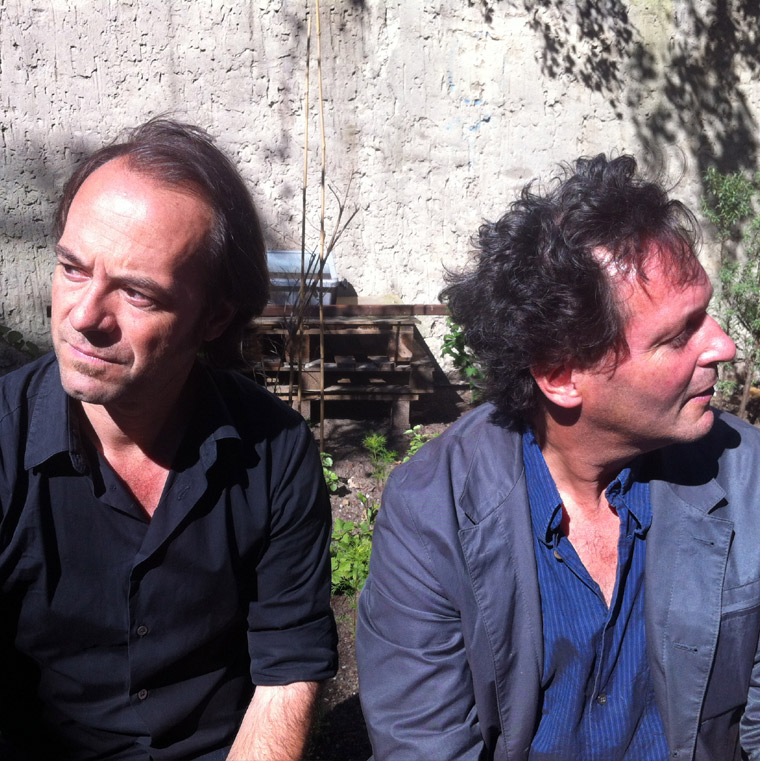
Hadron are Michael Wertmüller on drums and computer and Marino Pliakas on ebass.
Michael Wertmüller (Geneva) is a Swiss composer and drummer, who works in the field of contemporary music and jazz. He attended the Swiss Jazz School, then the conservatory in Berne and the Sweelinck Conservatory in Amsterdam. He is a strongly physical and wild drummer and he tends to be sensual in his performance. His music is, on the one hand, full of raw power, on the other, speculative.
Marino Pliakas (Zurich) considers himself Swiss and Greek. He currently lives in Zurich in Switzerland, where he studied classical guitar at the Zurich Conservatory and history at the University of Zurich. He plays the guitar, bass guitar and double bass in the fields of new music, jazz, improvised and avant-rock. His distorted bass does not only deliver a magnetic pulse but also serves as some kind of rhythm guitar. He is also an extra member of various avant-guard ensembles.
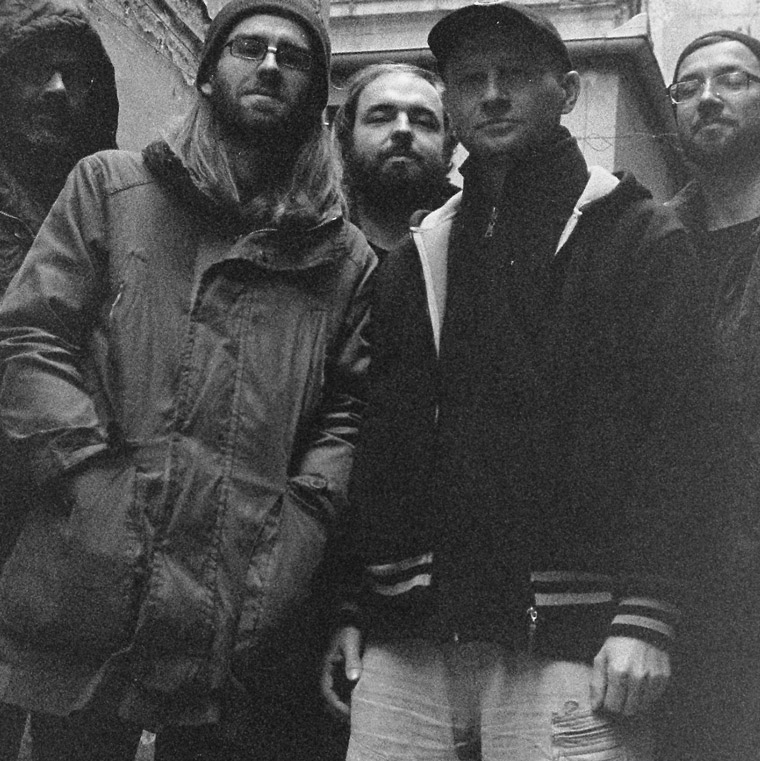
Quintet Alameda (Bydgoszcz) is Alamedia Trio’s younger brother. Alameda 5 is less into rock music. The music of the quintet focuses more on improvisation and experiment, and on the other hand, it’s based on trans rhythm played by two drummers/percussionists: Jacek Buhl (Variete, Maestro Trytony, Jachna/Buhl) and Rafał Iwański (Hati, Kapital, Innercity Ensemble). The tonal core of the quintet, like the Trio, are the guitarists Mikołaj Zieliński and Kuba Ziołek. The latter performs solo as Stara Rzeka and is also a member of Innercity Ensemble. The fifth of the quintet is Łukasz Jędrzejczak, who controls the electronic instruments and synths. He also plays in T’ien Lai and So Slow.
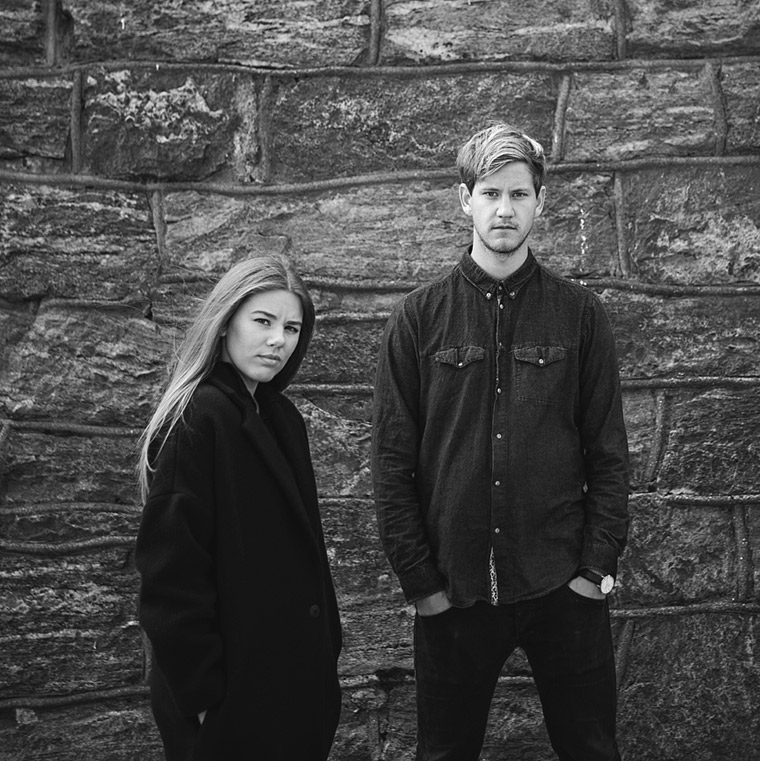
THE JIST
The two halves of this duo come from a small village in western Norway. Their cooperation, however, started in Oslo in 2011. Their project was inspired by the sound sphere of a big city, which was transformed by the artists into small constellations of their own music. Using a guitar and voice modified with effects and their own individual approach to instruments, the musicians create improvised, dynamic, noisy electroacoustic structures. Their debut album was released in March 2014 by Va Fongool label.
Festival ticket allows you to enter all club events.
In case of lack of festival ticket, entry fee costs: 10 zł
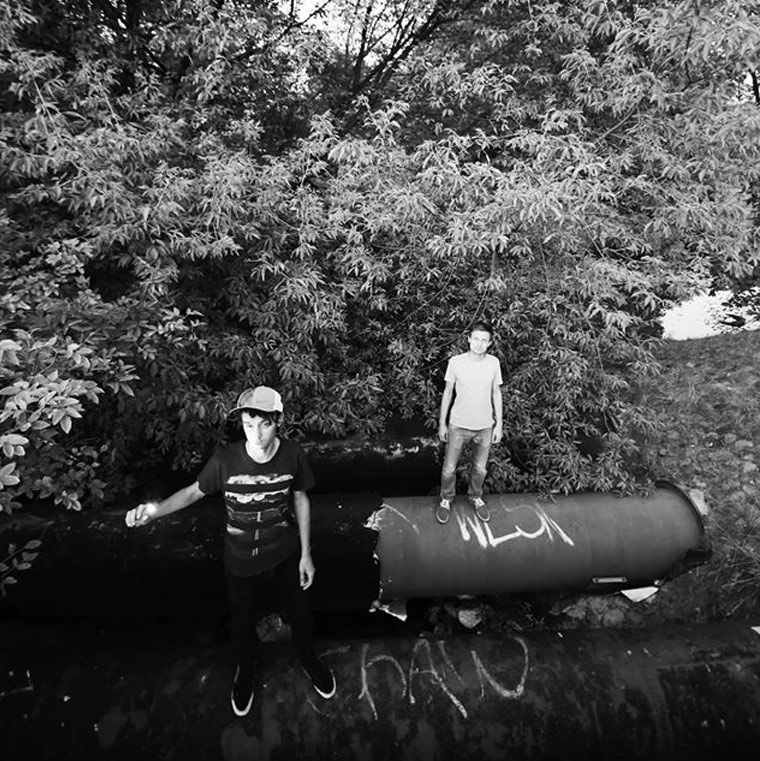
Owls Are Not (Warsaw/Bydgoszcz) is a band formed in 2011 as a trio and since 2014 plays as a duo of Marcin Suliński on drums and Piotr Cichocki on multiple instruments. They signed a contract with a French recording label Atypeek Music. The music of Owls is a combination of punk and electronics with references towards contemporary music, modern jazz and drum’n’bass. The band has toured in Poland, Great Britain, Norway, France and Italy. Until now, they released 2 albums: "Owls Are Not What They Seem" (2012) and "2" (2015).
VJ PATHFINDER
Jarek Nowicki has been vjing since 2011. He does mappings, coding, scenography, interactive art, light arrangements and installations in clubs, theatres, festivals and public spaces. He is like an architect who aims at blurring the line between images, sculptures and videoart.

Szabolcs Esztényi (Warsaw/Budapest) is a composer, pianist, improviser and a teacher of Hungarian descent, who has been living in Poland since 1969. He studied piano in the class of Margerita Trombini-Kazuro and composition in the class of Witold Rudziński on Państwowa Wyższa Szkoła Muzyczna in Warsaw (Warsaw Higher Musical Education Public School). As a composer and a soloist he performed in Poland and abroad on many festivals (Warszawska Jesień [Warsaw Autmun], Poznańska Wiosna Muzyczna [Poznań Music Spring], Warszawskie Spotkania Muzyczne [Warsaw Music Meetings], Musica Polonica Nova Festival in Wrocław, Biennale Zagreb, Budapesti Zenei Hetek, Donaueschinger Musiktage and many others. He cooperated with well-known artists such as: Jerzy Artysz, Andrzej Hiolski, Heinz Holliger, Roman Jabłoński, Jadwiga Kotnowska, Wilanów Quartet, Halina Łukomska, Olga Pasiecznik, Jadwiga Rappé, Zygmunt Krauze's Music Workshop, Jerzy Witkowski, Iwona Mironiuk (with whom he has been performing as a piano duo since 1999). He has made many archive recordings for Polish Radio. For many years he has been cooperating with Ferenc Lantos nad Maria Apagyi, the creators of creative music-visual pedagogy and founders of Free Artistic School in Pécs, Hungary. Since 1972 he has been working as a piano teacher in Fryderyk Chopin's Higher Education School in Warsaw, as well as on Music Academy in Warsaw and Łódź. He is a regular guest in many academic centres with his illustrated lectures related to creative pedagogy and teaching improvisation.
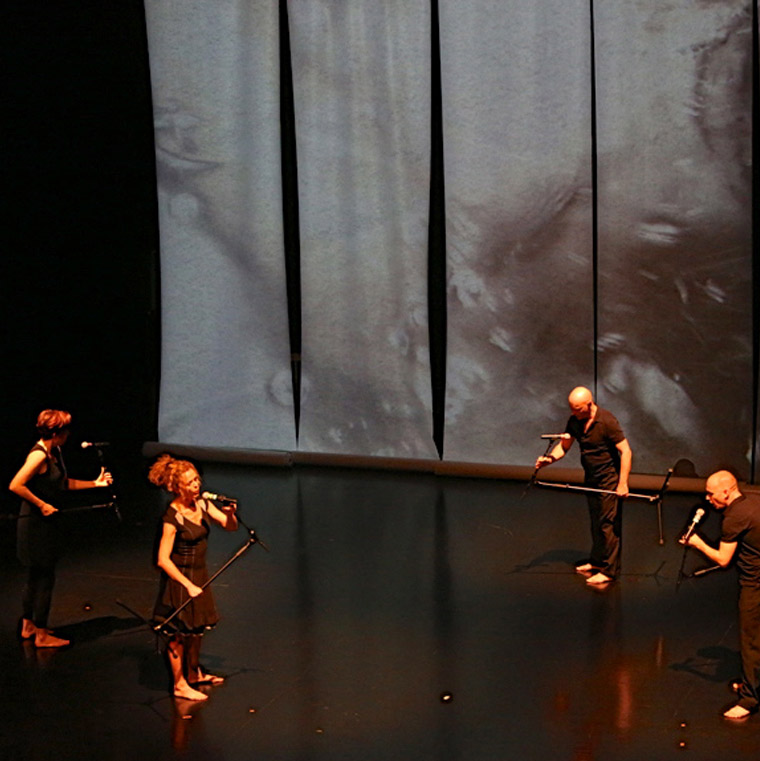
Franziska Baumann (Zurich) is a pioneer in extended vocal technique and interdisciplinary performance. Her works combine voice and gesture, image and landscape, space and sound and aim to discover new modes of perception. She explores gesture-based interfaces. As a composer her repertoire is diverse and includes commissions for electroacoustic and improvised projects to Music Theatre, large-scale site-specific sound environments and installations.
Claudia Brieske (Zurich) is a video and sound installation artist. Her approach, the so-called “metaphorical Gestures”, is based on sequences in which simple gestures are focused in the way that complex perception levels are revealed and new forms of communication explored. The relationship between sound, image and movement is of special importance in her work.
Christoph Baumann (Zurich) is a pianist and a composer. His work oscillates somewhere between the improvisation and composition. He assumes stimulating or critical stances by means of playfully confronting and fusing attitudes and mentalities. His pervading interest to bring different musical styles into a dramatical context is particularly evident in his big speciality, to tailor his composed and improvised music tightly to theatre and radio plays, dance, films and his three speech-operas.
NOMAD-X is a trans-media performance for selected locations. Local space and reality experience serve as base material. Baumann and Brieske compose with on-site conditions keeping a variable and open-ended approach. Every location is a kind of artist in residence for them, be it a museum space, a building site, a park, a glacier, etc. By audiovisual orchestration and concert performance the discovered elements will be brought in a surprising dynamic process. NOMAD-X examines our perception mechanisms through which the particular place itself can be experienced in a new way. NOMAD-X on stage (Bydgoszcz/Warsaw) show is a kind of journey that picks up the traces of former locations and connects them with the local ones. The elements of each “journey” form new breathing elements for the following event. A compositional structure interacts with improvisation. Visuals of piano keys and strings, hands, mouths interact with images of point-of-view shots in the city.
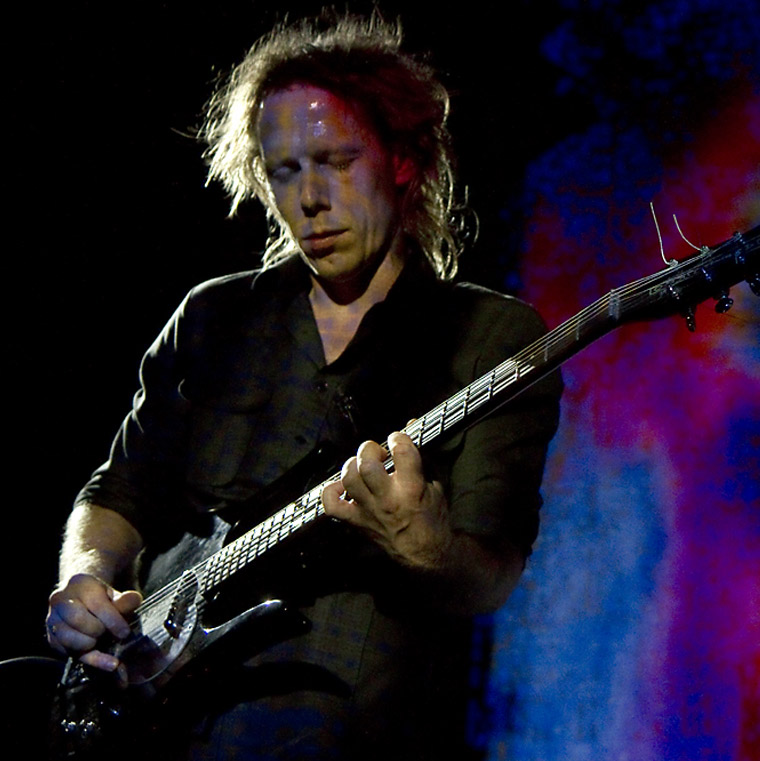
Stian Westerhus (Oslo) born in 1979, has been pushing the boundaries with his guitar for the last ten years. Intimately playing the guitar, like a part of his own body, Stian’s expressive playing breaks down the barriers of the electric guitar and bends music, whether it is on his own as a solo performer or with others. He’s a player that can snuggle comfortably with the improv crowd and he can sound more like a machine than man. He webs sandblasted misshapes into a rhythmic weave, which is intricately baffling. His pursuit of new sound is more about finding expressive possibilities than an end in itself: when he rips it in the upper register, his instrument sings, piercing through the murk like moonlight on the fens.
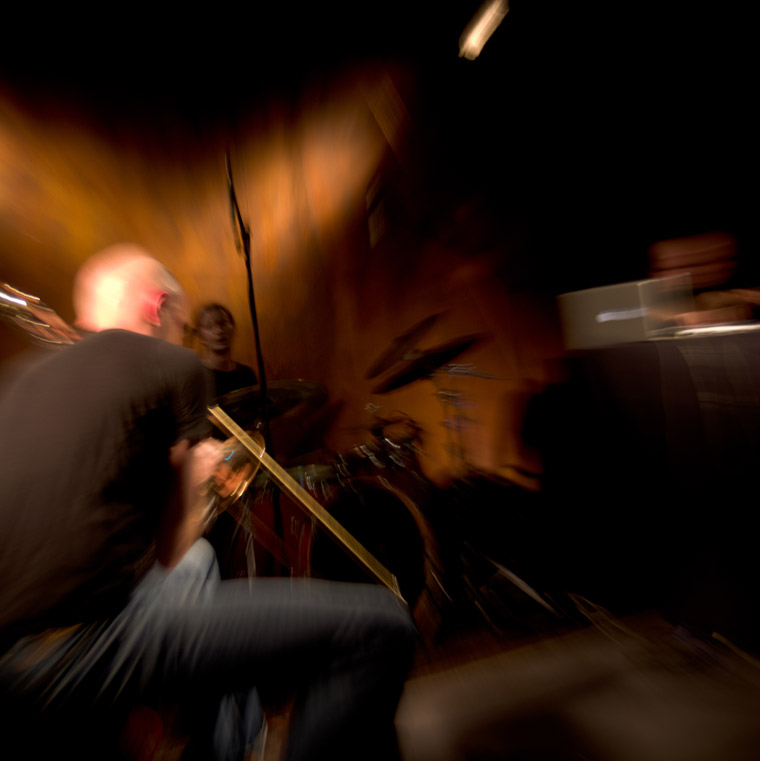
Sebastian Smolyn (Basel), born in Poland in 1975, is an instrumentalist and a composer. Currently, he lives and works in Basel, Switzerland. He studied classical music, instrumental pedagogy and graduated at the Musikhochschule in Zurich. Having gathered the experience playing classical music both solo and with various orchestras and ensembles he started to compose and play his own music. Since 2003 he has been playing experimental, improvised and electronic music. Currently, among other projects, he is working with a duo called “Defibrillator” with his brother Artur.
Artur Smolyn (Basel), born 1976 in Poland, is an instrumentalist and an audiodesigner. Currently, he lives and works in Basel, Switzerland. He studied classical music at the universities in Luebeck, Basel, Mannheim and Montbéliard and graduated with four diplomas. Ever since his graduation in the field of classical music he has been working as a trombonist with various orchestras. Parallel to his professional work, he discovered a new passion so he did a degree in electroacoustic music at Elektronische Studio in Basel and then at the Conservatoire Montbéliard.
Daniel Buess (Basel), born in 1976 in Switzerland, studied traditional south Indian percussion-music at the Musikhochschule Basel and Arabic percussion music during a three months residency in Cairo, Egypt. In most of his own independent projects and performances, which preferably happen at unusual places like car-workshops, Daniel makes an extensive use of his self-made percussion devices, built of different materials and electronics. Daniel was and is still involved in various groups and Ensembles in the realm of experimental and improvised music.
Sebastian Smolyn - e-trombone
Artur Smolyn - electronics
Daniel Buess - drums, electronics
Festival ticket allows you to enter all club events. In case of lack of festival ticket, entry fee costs: 10 zł
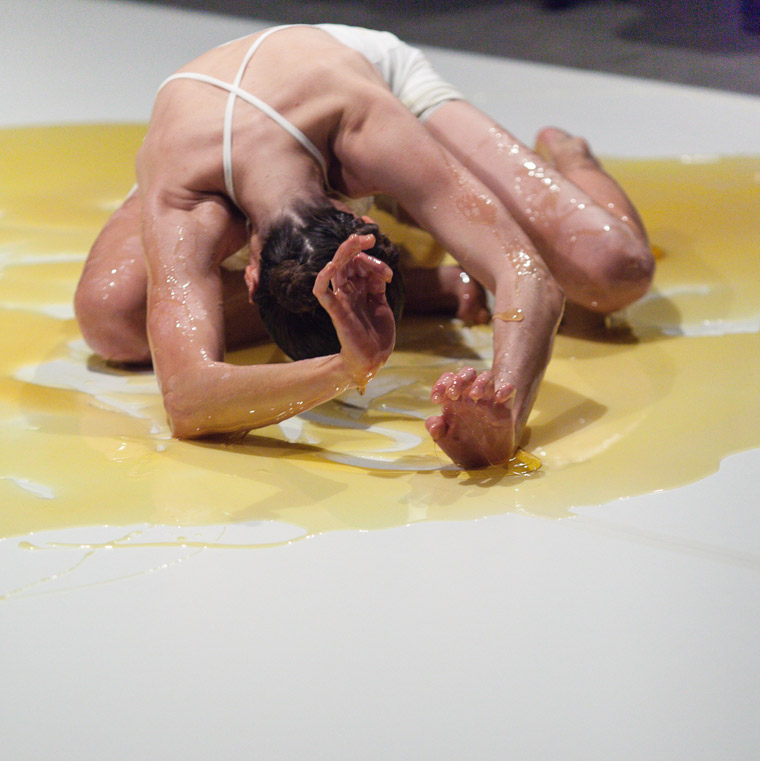
TO-EN (Gdańsk) is a butoh dancer. TO-EN in Japanese means Earth-Garden, Earthly Garden. She began her artistic journey in Sweden in a butoh dance group SU-EN Butoh Company lead by an artist and choreographer SU-EN. In 2009 TO-EN had her debut solo performance in Stockholm, which was also the birth of TO-EN Butoh Company. Currently, TO-EN works in Poland. She makes performances, multidisciplinary projects, site-specific actions, improvisations, leads workshops and gives lectures.
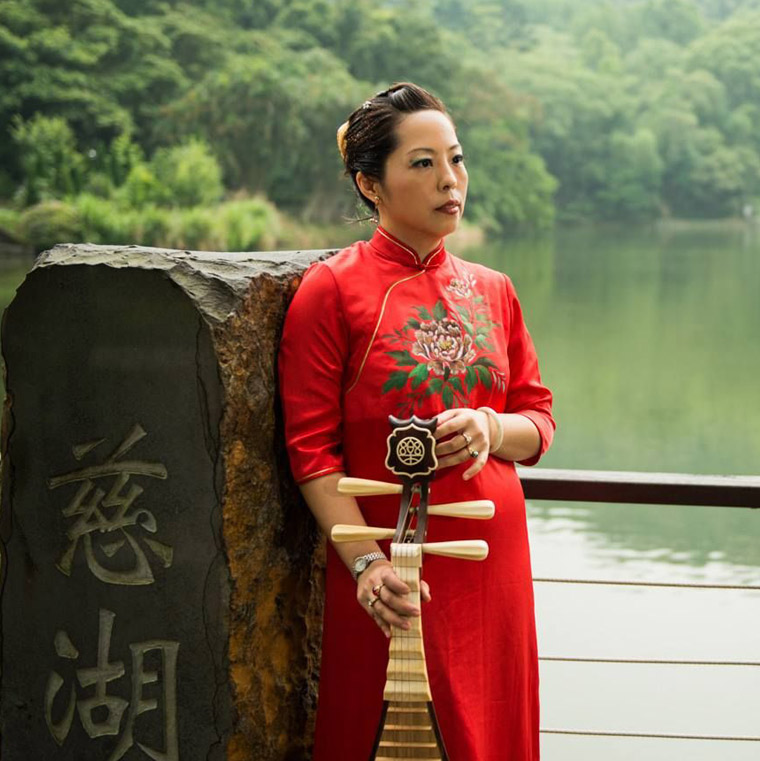
Luo Chao-Yun (Taipei) is a free jazz soloist and avant-garde composer. She plays the pipa, which is a four-stringed Chinese musical instrument that has a pear-shaped wooden body. It is one of the most popular Chinese instruments. It is praised for its refinement and delicacy and its’ tone is melodious and unique in expression. Luo Chao-Yun has a Master’s degree in the Central Conservatory of Music in Beijing and is known for developing new skills for pipa. She is the Taiwan Pipa Ambassador and she is said to have discovered not only Taiwan's good sound but also Taiwan's cultural heritages. Her superb performances are always diverse and distinctive which makes her a higgly-appreciated pipa pioneer worldwide.

Jan Jelinek (Berlin) was born in Darmstadt and then moved to Berlin. His approach to music is all about the transformation of sound, about translating parameters of popular music into abstract, reduced and textural electronics. Bypassing the rules of traditional musicianship, he prefers to construct collages from tiny sound fragments, from the lost-and-found products of samplers, tape recorders, media players and other recording implements. To this end, Jan Jelinek often works with loops and slight modulations to distil the gist of a piece of music and define it more clearly while masking its original source.
Masayoshi Fujita comes from Japan where he studied film. He was introduced to music via Bon Jovi and his first music adventure was with rock. Later on, he decided to learn how to play the drums, followed by extensive vibraphone training to play his own, mostly jazz and electronic-influenced compositions. Determined not to stick to traditional vibraphone styles or techniques, Masayoshi started to prepare his instrument with pieces of metal, strips of foil and similar objects. The resulting new sounds, similar to distortions, helped to expand the vibraphone spectrum without destroying the instrument’s genuine character.
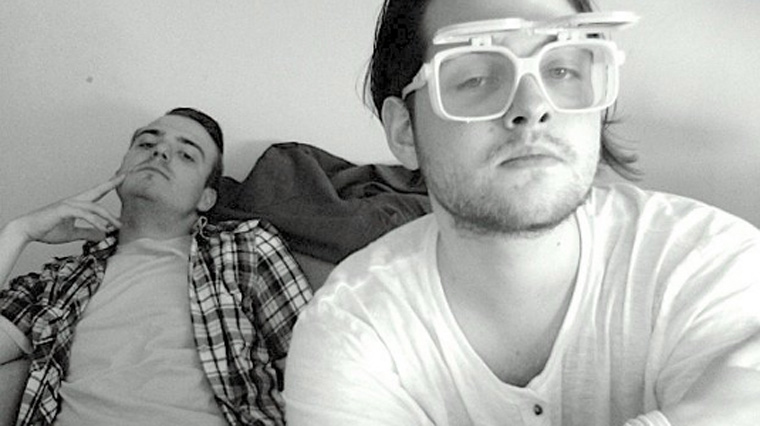
Kondensator Przepływu is a duo of old friends who once sat at one desk. Even though in the beginning they did not warm to one another and verbalized themselves harshly, treated each other's faces with negative physical forces focused mainly on the tense fibers of childhood clothing, eventually this human compilation, among others, survived up to this day. They have been playing, drinking, smoking, screaming, crying, walking and they still do and probably will continue to do so. They would like to invite you to a spontaneous and improvised, dance-ish sound performance founded on computers, then a table, then floor, and then (having omitted many intermediates), on Earth.
Zion Train Sound System (Cologne/Kingston), founded in 1990 in London by Perch, are pioneers in future dub and the first band to bring that sound to Poland. Alongside groups such as Dreadzone they can be named the biggest stars of reggae and contemporary electronic club music.
In 1999 they started releasing high quality dub, electronic music, experimental drum'n'bass and dance music world in their own Universal Egg label. DJ Perch is constantly faithful to his principle of independence in music and full control of his image and output. He also strongly emphasises the positive message of music.
There is one ticket for each festival day that allows you to enter all events on a given day. We do not sell tickets for single concerts.
Tickets can be bought online on the festival website by clicking BUY TICKET for the chosen date
Tickets will be also available since Oct 1st at the bar at Mózg Powszechny club, Tue-Sun, 8 pm untill late hours.
Tickets will be also available at the entrance to Teatr Powszechny before each festival day.
We offer a 30% discount for students of artistic universities